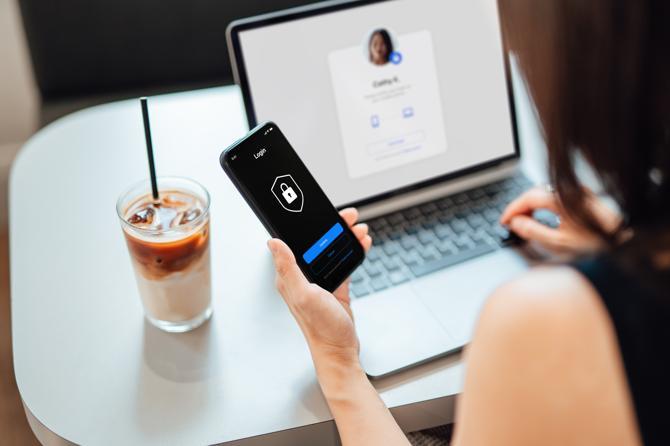
With a 72.2% share of the global market, Android is by far the most popular operating system in the world, beating the second-place iOS by Apple, which has a 27.11% market share. With such widespread use—and the fact that electronic devices store significant amounts of sensitive information—it is easy to understand why the Android Operating System (OS) would be much targeted by hackers, and, therefore, why it is crucial to protect Android devices from malware and cybercrimes.
Although Android devices offer some security, these protections are not enough to guard against hackers stealing important details such as passwords, images, and more. In fact, recently, Android system banking malware has increased by 80%. As such, Android users must take extra precautions to ensure the security of their devices.
Do Android Devices have any built-in security features?
To protect its users, the Android OS has multiple security features built into it. These native safeguards offer some safety and are designed to protect Android devices from malware and other threats. Some of the most notable features are:
- File-based and full-disk encryption to keep user data private.
- Multiple authentication methods, including PINs and biometric unlocking with facial recognition or fingerprints.
- A built-in antivirus for Android, called Google Play Protect, which automatically scans downloaded apps for malware and prompts users to uninstall any potentially malicious programs.
- Blocking potentially malicious software with Verify Apps.
- High-level permissions that allow users to control what apps can or cannot do.
- Automated password check that vets Autofill passwords against those on lists of known compromised passwords.
- A spam filter that alerts users to any suspicious calls or messages.
- Defense against dangerous websites and files through Google Safe Browsing.
- Keeping a device locked except in specific, trusted circumstances, with Smart Lock.
- Knowing the location of Android devices at all times with Find My Device, and being able to remotely lock or erase the device with Device Protection.
Because of all these native safety measures, Android devices do have some advanced security that helps users stay secure. However, these features are not infallible, so it is incumbent on the user to enhance the security of their device by following common sense internet safety and password hygiene guidelines. This is because the Android OS has some unique vulnerabilities that cybercriminals can easily exploit.
Of course, all smartphones are vulnerable to all types of cybercrimes. But, because Android operates on open-source code, hackers can easily find security gaps to exploit and modify the code for their own means. In addition, because the Android OS has the largest market share—nearly three times that of Apple’s iOS—hackers have far more incentive to target these devices by creating Android system malware as there is far more sensitive information to find. This explains why there are 50 times more mobile malware infections on Android devices than on iOS devices. And, since unlike other operating systems, Android allows users to download apps from third parties, so there are far more ways for malware to end up on these devices.
What are the most common types of Android security breaches?&
Cybercriminals are inventing increasingly creative ways to circumnavigate Android device security features. In fact, there is over 480,000 new Android system malware each month. Because of this, there is a range of OS-specific malware that users need to be wary of, such as Android ransomware, adware, backdoor, file infector, spyware, and trojans.
However, a recent report found that there were three trojans responsible for almost 91% of detected threats in February 2022:
- Downloader.DN: Apps downloaded from the Google Play store that includes particularly lethal adware.
- InfoStealer.XY: Fake antivirus programs for Android that steal sensitive data and install malware.
- HiddenApp.AID: fake ad blockers.
In 2022, many Android security breaches were linked to malware called MailBot. This aggressive banking malware steals passwords, banking information, and even the contents of users’ cryptocurrency wallets by circumnavigating all security measures, including multi-factor authentications. It spread quickly by hacking into the SMS function of Android smartphones to send messages to contacts. Similarly, AlienBot is a malware that injects malicious code into financial apps, allowing hackers to hijack bank accounts and devices, while Anubis is a multifaceted malware that functions as a banking trojan, keylogger, and audio recorder.
10 tips for protecting the security of an Android device
Despite the vulnerabilities of these devices, there are many ways in which users can minimize the risks from Android security threats. As well as regularly using safe online behavior, these 10 steps can help enhance an Android device’s security.
1. Keep the Android OS up to date
As with any electronic device, it is critical for users to ensure that they have the latest Android OS installed. Manufacturers regularly release updates to operating systems and apps to offer users enhanced features, but these updates often also come with the latest Android security patches, which add an additional layer of protection. Of course, the same applies to all apps on the device, too, and the Google Play store allows users to set automatic updates so that this is never an issue.
2. Avoid downloading from third-party sites
For many users, one of the biggest advantages of the Android OS is that it does not restrict them to downloading only from the Google Play store. Instead, users can download apps from any third-party source, which in theory, offers a greater variety of options. However, this is a significant vulnerability that hackers can exploit for Android security breaches. It is all too easy for hackers to embed Android ransomware and other malicious software in third-party apps and then infect user devices. As such, the best practice is to download only from the official Google Play store, which automatically scans all apps for obvious malware.
3. Check permissions when installing new apps
Many users do not pay close attention to managing app permissions, but this is one way that Android system malware can infect a device. This is why it is important that users regularly check their permission settings and ensure that each app only has exactly the permissions it needs. For example, a dating app may need permission to use the device’s location, but it only needs this when the app is in use. And, while a photo editor may need access to photos, it is usually possible to only permit access to select photos. In addition, it is useful to read through an app’s permissions and terms before installing it, to try and avoid using anything that could compromise the security of the Android device.
4. Avoid free or unsecured Wi-Fi networks
Free Wi-Fi can be incredibly useful, especially when traveling. But because these networks are usually unsecured, they are also a significant threat to Android security. Simply being on the same network as a hacker means that they can monitor any data being transmitted over that connection. In general, it is best to avoid free public Wi-Fi networks but if it is absolutely necessary, it is best to use a program like Kaspersky VPN Secure Connection to encrypt data and offer some extra protection.
5. Use security software
Although Android device security includes Play Protect, which scans for obvious signs of malware, it is usually a good idea to have a high-level third-party scanning software. However, it is often better to go with a well-known brand rather than one of the multitudes of free scanners, which can sometimes hide malicious software themselves. Using a paid antivirus program for Android can significantly enhance the security of a device as they check for far more threats. Of course, it is crucial that the software is kept up to date, too.
6. Use high-level lock screen settings
This Android security tip might seem obvious, but it is one of the most important. Smartphone users often store an incredible amount of data on their phones, from passwords and banking details to credit card information and social media profiles. As such, it is essential to protect all of this information by setting a lock screen that can only be unlocked with a complex PIN, or biometrics. This can ensure, for example, that someone else can’t use a contactless payment method set up on the device’s Google Wallet or access emails and messages.
7. Use biometric authentication for payments
Many smartphone users enjoy the convenience of contactless payments through their phones. However, to protect the security of their Android device, users should ensure that all contactless payments made through their phones must be authorized with biometrics. This ensures that if the phone is lost or stolen, no one else can purchase apps on the Google Play store or make payments through the Google Pay wallet, for example.
8. Enable and Use Google Play Protect
To avoid exposure to Android system malware, the Android OS includes Google Play Protect. This is essentially a native antivirus for Android which automatically scans all apps for malware and alerts users to suspicious programs. However, the user must enable Google Play Protect in the device’s settings, and can also initiate scans manually to ensure optimal protection.
9. Check passwords
As part of Android security infrastructure, Google allows users to save passwords for regularly used websites and apps and monitors these against known data breaches. However, users should make a habit of checking over the list of passwords saved in their Google profile to see if any have been compromised or need updating. It is also useful to enhance password security by using a program like Kaspersky Password Manager to generate and store unique passwords.
10. Use multifactor authentication
While strong passwords are an important aspect of Android device security, users should not rely on them alone. Instead, where possible, using two-factor—or multifactor—authentication, on accounts significantly reduces the opportunity for others to access any sensitive data. Android users can activate two-factor authentication by going into the device’s settings and accessing the “Security” tab under “Google Account.”
Conclusion
While Android devices come with several useful security features, users should not rely on these alone. To ensure the security of their Android devices, users must take additional precautions such as using strong passwords and multifactor authentications, managing app permissions, and downloading only from the official Google Play app store. In addition, using brand-name antivirus programs for Android, installing VPN software, and avoiding free public Wi-Fi networks can further enhance Android device security. All of this will minimize the chances of the device succumbing to an Android security breach and having the user’s sensitive details stolen.
Kaspersky Endpoint Security received three AV-TEST awards for the best performance, protection, and usability for a corporate endpoint security product in 2021. In all tests, Kaspersky Endpoint Security showed outstanding performance, protection, and usability for businesses.
Related Articles and Links:
Avoiding cell phone spyware infestation
Mobile security: Android vs iOS – which one is safer?
How to detect and avoid malware on Android devices
Related Products and Services:

